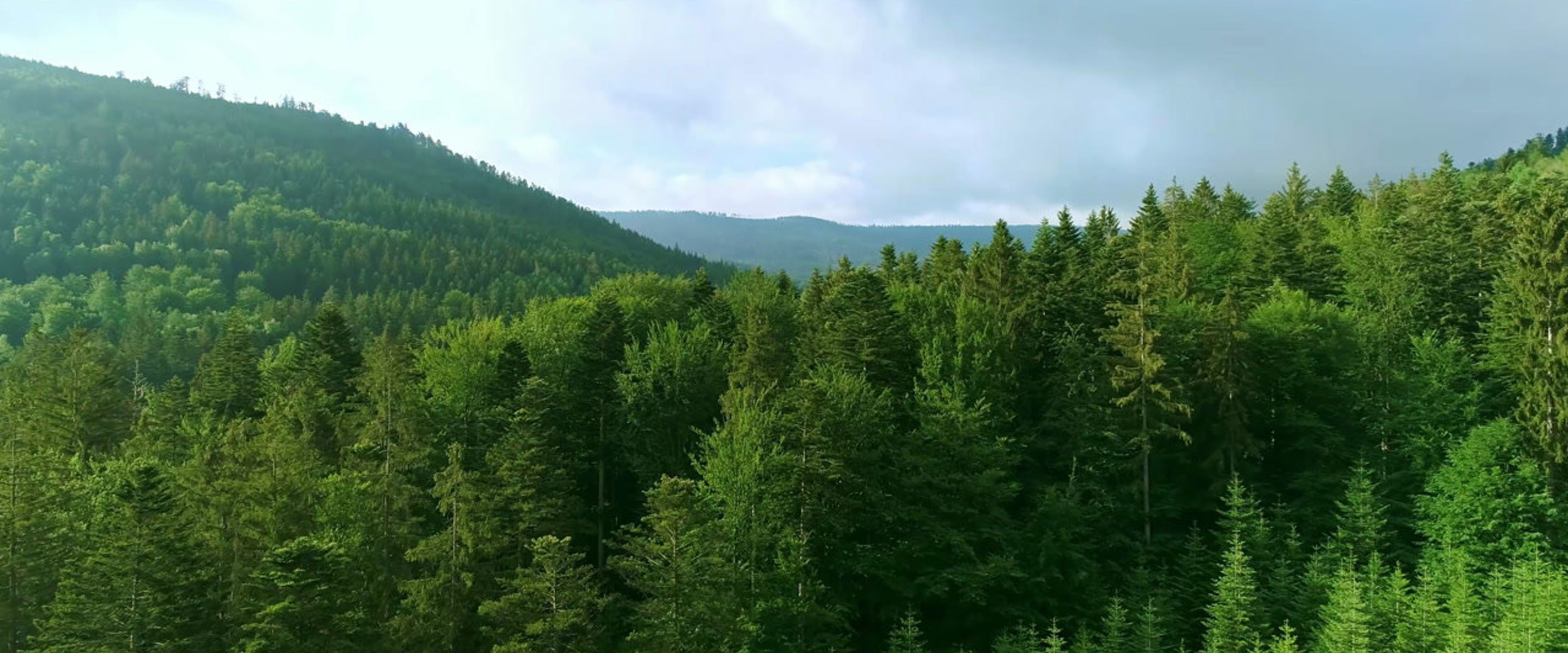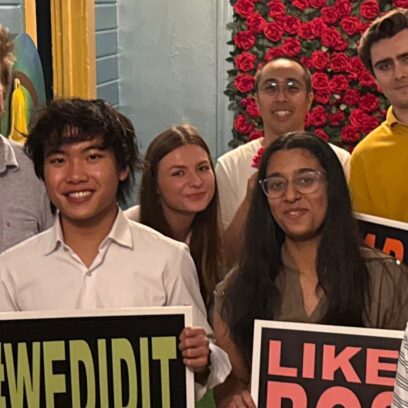What to Know About Forestry Projects in Your Carbon Strategy

Skip the RFP—CarbonBetter can help
CarbonBetter Certified Offset Portfolios allow carbon buyers to participate in a variety of projects, geographies, and technologies in one simple transaction rather than navigating a lengthy and complex RFP process with multiple carbon market participants.
Learn More about CBCO 22-1Your guide to the types of forestry projects available and their benefits & tradeoffs.
Forests are vital allies in the fight against climate change, acting as natural carbon sinks that absorb and store carbon dioxide (CO2) from the atmosphere. In the voluntary carbon market (VCM), forestry projects play an important role by offering carbon credits that organizations can purchase to offset their carbon emissions. These projects not only contribute to carbon sequestration but also provide additional benefits such as biodiversity conservation, water regulation, and support for local communities. However, the effectiveness and integrity of forestry-based carbon credits have been subjects of scrutiny, emphasizing the need for transparency and robust standards in the VCM.
Why Forestry Matters in Carbon Markets
Globally, forests absorb nearly 16 billion metric tonnes of CO2 each year, and currently hold 861 gigatonnes of carbon in their branches, leaves, roots, and soils. This makes them one of the most effective natural solutions for climate mitigation. By preserving and restoring forests, we can significantly reduce the concentration of greenhouse gases in the atmosphere.
The voluntary carbon market has seen substantial growth, with forestry projects being a significant contributor. For instance, TotalEnergies invested $100 million to preserve U.S. forests, aiming to generate carbon credits by preventing deforestation. Such investments highlight the potential scale and impact of forestry credits in achieving corporate net-zero goals.
Beyond carbon sequestration, forestry projects offer numerous co-benefits. They enhance biodiversity by providing habitats for various species, regulate water cycles, and support local communities through job creation and sustainable resource management.
Types of Forestry Projects in Carbon Markets
In the VCM, forestry projects vary not only in their ecological context but also in how they deliver climate benefits. Broadly, these projects fall into three categories based on their carbon impact: removal (capturing and storing carbon from the atmosphere), avoidance (preventing emissions that would otherwise occur), or both. Here are some common forestry project types.
Common Forestry Project Types
| Carbon Impact Type | Forestry Project Type | Description |
| Carbon Removal | Afforestation, Reforestation, and Revegetation (ARR) | Planting trees on degraded or non-forested land to sequester carbon. |
| Urban Forestry | Planting and maintaining trees in urban areas to remove atmospheric CO₂. | |
| Emissions Avoidance | Reduced Emissions from Deforestation and Degradation (REDD) | Preventing deforestation and forest degradation to avoid CO₂ emissions. |
| REDD+ | Builds on REDD by adding sustainable forest management and conservation efforts. | |
| Both Removal and Avoidance | Improved Forest Management (IFM) | Enhancing carbon storage by changing forest management practices. |
| Agroforestry | Integrating trees into agricultural systems for carbon storage and soil health. | |
| Mangrove Restoration | Restoring coastal mangrove forests to store carbon and prevent erosion. |
Each of these plays a distinct role in climate mitigation and comes with its own carbon accounting methodologies, risk profiles, and co-benefits. The following sections explore these approaches in more detail.
Carbon Removal Projects
Afforestation, Reforestation, and Revegetation (ARR)
One of the most commonly used forestry methods in carbon markets is afforestation, reforestation, and revegetation (ARR), which enables carbon removal by planting trees either on degraded land or land that has not previously supported forests. These projects can deliver long-term carbon sequestration benefits as trees grow and mature, pulling CO₂ out of the atmosphere and locking it away in biomass and soil.
Beyond carbon benefits, ARR projects help restore ecosystems degraded by agriculture, logging, or other land uses. By reintroducing native tree species, these efforts can rebuild habitat, support biodiversity, and enhance soil and watershed health. To ensure the durability of climate and ecological benefits, it is critical that ARR projects are supported by long-term structures, such as conservation easements, community stewardship models, and formal no-harvest commitments, that prevent future deforestation or timber harvesting on the project lands.
A notable example is Chestnut Carbon’s Sustainable Restoration Project—the largest afforestation initiative in the United States. Since 2022, the developer has planted over 17 million trees across more than 30,000 acres in the Southeastern U.S. In 2023, Microsoft signed a 25-year agreement to purchase over seven million tons of carbon removal credits from this project, underscoring its scale and credibility. The project is the first U.S.-based afforestation initiative to receive verification under the Forest Stewardship Council’s Biodiversity Conservation program, ensuring long-term ecological integrity. Additionally, by partnering with local foresters, nurseries, and communities, the project supports regional economies and promotes sustainable land stewardship.
However, one of the key challenges of ARR projects is the time lag. Trees take decades to reach their full carbon-absorbing potential, and the permanence of those carbon stocks can be threatened by wildfires, pests, or future land-use changes. As such, ARR is best suited for organizations with long-term decarbonization strategies.
Urban Forestry Projects
Urban forestry, though smaller in scale, has a unique place in the carbon market ecosystem. These projects involve planting trees in cities and expanding urban tree canopies. While the carbon sequestration potential is limited compared to larger forestry projects, the co-benefits are significant, from reducing urban heat islands and improving air quality to promoting public health and community engagement. Urban forestry is often used to support Scope 3 engagement strategies or as part of public-private partnerships focused on environmental equity.
One initiative that reflects this potential is the Highland Park Urban Forest Rejuvenation Project in Illinois, implemented between 2019 and 2022. The initiative aimed to build climate resilience by planting 486 new trees along city-owned rights-of-way, focusing on diversifying species to protect against pests and disease. Supported by City Forest Credits and the Urban Forestry Carbon Registry, the project generated verified carbon credits, making it one of the first urban forestry projects in the U.S. to do so. Proceeds from credit sales were reinvested into the city’s tree planting efforts, creating a self-sustaining model for urban greening. In addition to sequestering an estimated 1,008 metric tons of CO₂ over 40 years, the project contributed to improved air quality, stormwater retention, and neighborhood livability.
Emissions Avoidance Projects
Avoided Deforestation (REDD / REDD+)
Another popular project type is avoided deforestation, typically implemented through REDD or REDD+ frameworks. These frameworks are developed under the United Nations Framework Convention on Climate Change (UNFCCC) and operationalized through carbon standards such as Verra’s Verified Carbon Standard (VCS), American Carbon Registry (ACR), and ART’s TREES program. REDD stands for “Reducing Emissions from Deforestation and Forest Degradation” and focuses on preventing the clearing and degradation of existing forests, which would otherwise release significant amounts of stored carbon into the atmosphere. REDD+ builds on this foundation by including additional activities such as sustainable forest management, forest conservation, and the enhancement of forest carbon stocks. It also emphasizes the improvement of livelihoods for communities living within and around forests. The carbon benefits of both approaches lie in the avoided emissions from land-use change, making them particularly valuable in areas at high risk of deforestation.
A notable example is the Khe Nuoc Trong REDD+ Project in Vietnam. This initiative protects over 21,000 hectares of lowland tropical forest in the Annamite Mountains, an area rich in biodiversity and home to numerous endangered species. The project, developed by Viet Nature Conservation Centre in partnership with the World Land Trust, focuses on reducing deforestation through community engagement, sustainable livelihoods, and improved forest governance. By providing training and support for sustainable forestry practices, the project offers alternative income sources for local communities, thereby reducing the pressure to clear forests for agriculture.
However, these projects come with challenges — including leakage (where deforestation shifts to nearby areas), the complexity of setting credible baselines, and ensuring long-term permanence of preserved forests. Despite these issues, REDD and especially REDD+ can be highly impactful when grounded in strong local governance and community participation. Many REDD+ initiatives are closely tied to Indigenous land stewardship and support biodiversity protection alongside climate mitigation.
“Forests are vital allies in the fight against climate change, acting as natural carbon sinks that absorb and store carbon dioxide from the atmosphere.”
Sayali Chaudhari, Climate Services Analyst

🌍 Carbon markets can feel overwhelming—fragmented data, limited transparency, and conflicting advice make it hard to know where to start. In this webinar, our experts give a clear, practical introduction to the VCM.
Both Removal and Avoidance Projects
Improved Forest Management (IFM)
IFM offers a third pathway for generating forestry credits. IFM projects enhance carbon storage by changing how working forests are managed. For example, by extending harvest cycles or using selective logging rather than clear-cutting. These adjustments help maintain or increase the forest’s carbon stock while still allowing for sustainable timber production. IFM is often ideal for commercial landowners seeking to implement more responsible forest practices. Nevertheless, the method's success hinges on the credibility of its baseline assumptions and the durability of carbon storage over time. Common project examples include increasing rotation lengths between harvests and using reduced-impact logging to minimize forest disturbance.
One such project is the Afognak Forest Carbon Project in southern Alaska. This initiative focuses on preserving the carbon-rich forests of Afognak Island through sustainable forest management practices. By extending harvest rotations and implementing selective logging techniques, the project enhances carbon sequestration while supporting local economies. The Afognak Forest Carbon Project has been recognized for its contributions to climate mitigation and community development.
Agroforestry Projects
Agroforestry presents a compelling solution that bridges agriculture and forestry. By integrating trees into farmlands, such as planting shade trees among crops or along field borders, these systems sequester carbon while improving soil fertility, water retention, and crop yields. Agroforestry not only supports climate goals but also boosts food security and rural resilience. These projects are especially valuable for smallholder farmers and community-led initiatives where the co-benefits of healthier soils and diversified incomes make a tangible difference.
A notable example is the Kenya Agricultural Carbon Project. This initiative has trained over 30,000 smallholder farmers in sustainable land management practices, including agroforestry, cover cropping, and composting. By adopting these methods, farmers enhance soil health, increase crop yields, and sequester carbon in both trees and soil. The sequestered carbon is quantified and converted into carbon credits, which are sold to generate income for the participating farmers, thereby linking climate mitigation with improved livelihoods.
Mangrove Restoration
Mangrove restoration is another forestry-based strategy with outsized climate and environmental benefits. Mangroves are coastal forests known for their incredibly high carbon sequestration rates, often storing carbon at several times the rate of upland tropical forests. In addition to their climate role, they protect coastlines from erosion, reduce the impact of storm surges, and support marine biodiversity. However, restoring mangroves can be technically challenging due to factors like salinity, land tenure issues, and the complexity of reestablishing hydrological conditions. When done well, though, mangrove projects can deliver powerful outcomes for both people and planet.
The Guanaja Mangrove Restoration Project in Honduras exemplifies such an initiative. Spearheaded by the Bay Islands Conservation Association (BICA) following the devastation of Hurricane Mitch in 1998, which destroyed approximately 97% of the island's mangrove forests, the project has been instrumental in ecological recovery. Since its inception in 2008, over 100,000 mangroves have been planted, with an additional 10,000 seedlings cultivated in school-based nurseries. The project emphasizes community involvement through educational programs, hands-on planting, and continuous monitoring to ensure the survival and growth of the mangroves. These efforts not only restore vital coastal ecosystems but also enhance local livelihoods and resilience against future environmental challenges.
Urban Forestry Projects
Urban forestry, though smaller in scale, has a unique place in the carbon market ecosystem. These projects involve planting trees in cities and expanding urban tree canopies. While the carbon sequestration potential is limited compared to larger forestry projects, the co-benefits are significant, from reducing urban heat islands and improving air quality to promoting public health and community engagement. Urban forestry is often used to support Scope 3 engagement strategies or as part of public-private partnerships focused on environmental equity.
One initiative that reflects this potential is the Highland Park Urban Forest Rejuvenation Project in Illinois, implemented between 2019 and 2022. The initiative aimed to build climate resilience by planting 486 new trees along city-owned rights-of-way, focusing on diversifying species to protect against pests and disease. Supported by City Forest Credits and the Urban Forestry Carbon Registry, the project generated verified carbon credits, making it one of the first urban forestry projects in the U.S. to do so. Proceeds from credit sales were reinvested into the city’s tree planting efforts, creating a self-sustaining model for urban greening. In addition to sequestering an estimated 1,008 metric tons of CO₂ over 40 years, the project contributed to improved air quality, stormwater retention, and neighborhood livability.
Key Considerations When Choosing Forestry Projects
When evaluating forestry projects for carbon markets, several key considerations come into play. Additionality is critical; projects must prove that the climate benefit would not occur without carbon finance. Durability is also essential, Carbon needs to remain stored for decades or centuries, and reversal risks from fire, pests, or illegal logging must be managed through buffers or insurance mechanisms.Leakage also needs to be addressed to ensure emissions are not simply being displaced elsewhere. Perhaps most importantly, projects must incorporate robust monitoring, reporting, and verification (MRV) mechanisms within the project. Co-benefits, such as biodiversity gains, job creation, or Indigenous land protection, can further strengthen project legitimacy and long-term impact.
Conclusion
Forestry projects represent some of the most powerful tools available in the voluntary carbon market. But to realize their full potential, it is essential to prioritize integrity, community involvement, and environmental stewardship at every stage. When done right, these projects can offer not just carbon reductions, but a more resilient and equitable climate future.
Need help? No matter where you are in your sustainability journey, we're here to help. Contact us today to learn more.
Forestry carbon projects are generally categorized by how they deliver climate benefits—through carbon removal, emissions avoidance, or a combination of both. Removal projects, like afforestation and reforestation (ARR), sequester carbon by planting trees on degraded or previously unforested land. Avoidance projects, such as REDD and REDD+, prevent emissions by protecting existing forests that are at risk of deforestation. Some project types, like improved forest management (IFM), agroforestry, and mangrove restoration, deliver both avoided emissions and carbon removals. Each project type comes with unique risks, methodologies, and co-benefits, so selecting the right mix depends on your organization’s goals and time horizon.
Forestry projects generate carbon credits by demonstrating that they either remove carbon dioxide from the atmosphere or avoid emissions that would have otherwise occurred. This process involves establishing a credible baseline, implementing interventions (like planting trees or preventing deforestation), and measuring the resulting climate benefit. To issue carbon credits, projects must be verified by independent third parties under recognized standards such as Verra’s VCS, ACR, or ART’s TREES. Only after passing verification and validation can the credits be issued and sold in the voluntary carbon market.
Beyond sequestering or avoiding carbon, forestry projects often deliver a wide range of environmental and social co-benefits. These can include biodiversity conservation, soil and watershed restoration, storm protection, improved air quality, and economic development through local jobs and sustainable livelihoods. For example, REDD+ projects often support Indigenous land stewardship and community governance, while urban forestry initiatives can promote public health and environmental equity. These co-benefits increase the overall value of the project and can be a key differentiator when evaluating credits.
While forestry credits can offer powerful climate solutions, they come with important risks that must be actively managed. Permanence is a key concern—trees take time to reach full carbon-absorbing potential and can be lost to wildfires, pests, or future land use changes. Leakage is another challenge, where protection in one area may push deforestation to another. The credibility of baselines—i.e., what would have happened without the project—is also critical to ensure additionality. To address these risks, high-quality projects use risk buffers, insurance mechanisms, and rigorous monitoring, reporting, and verification (MRV) systems.
Choosing the right forestry project requires aligning your organization’s climate goals with a project’s carbon performance, permanence, and co-benefits. Start by confirming that the project meets key quality criteria—such as additionality, durability, strong governance, and credible MRV. Look at the local context: Is the project working with Indigenous communities? Is it addressing real deforestation risk? Consider the project’s alignment with your sector, your timeline (short-term vs. long-term impact), and whether it contributes to broader ESG priorities. Partnering with an expert or intermediary can help navigate these trade-offs and build a diversified, impact-driven portfolio.

About the Author
Sayali Chaudhari is a Climate and Carbon Markets Analyst at CarbonBetter and supports clients in their sustainability strategy and management. She brings extensive experience in frameworks-aligned reporting including CSRD, climate risk scenario analysis, carbon footprint estimation and verification, and decarbonization efforts. Sayali holds a Masters in Sustainability Management from Columbia University and a Bachelors in Environmental Engineering from Nanyang Technological University.



